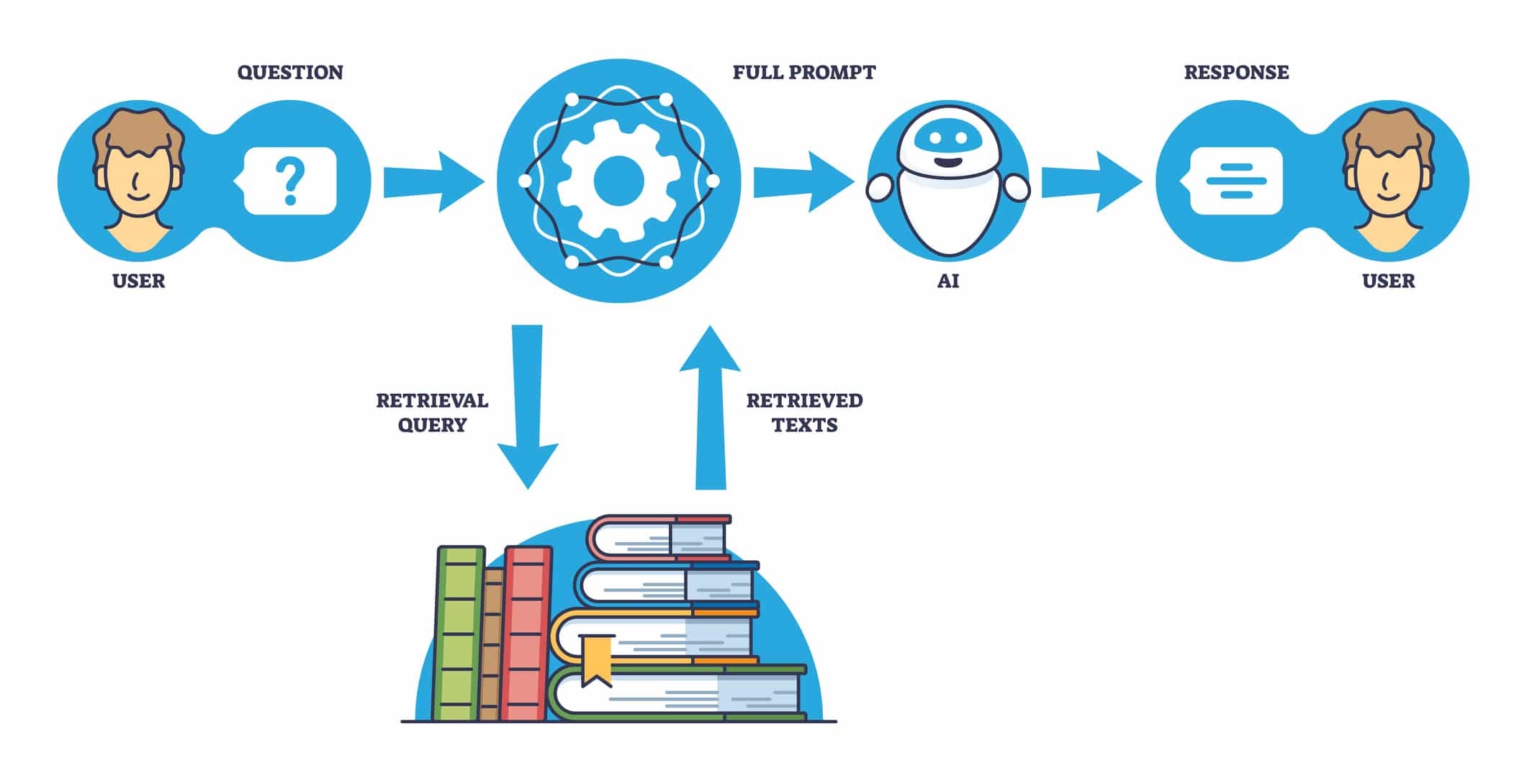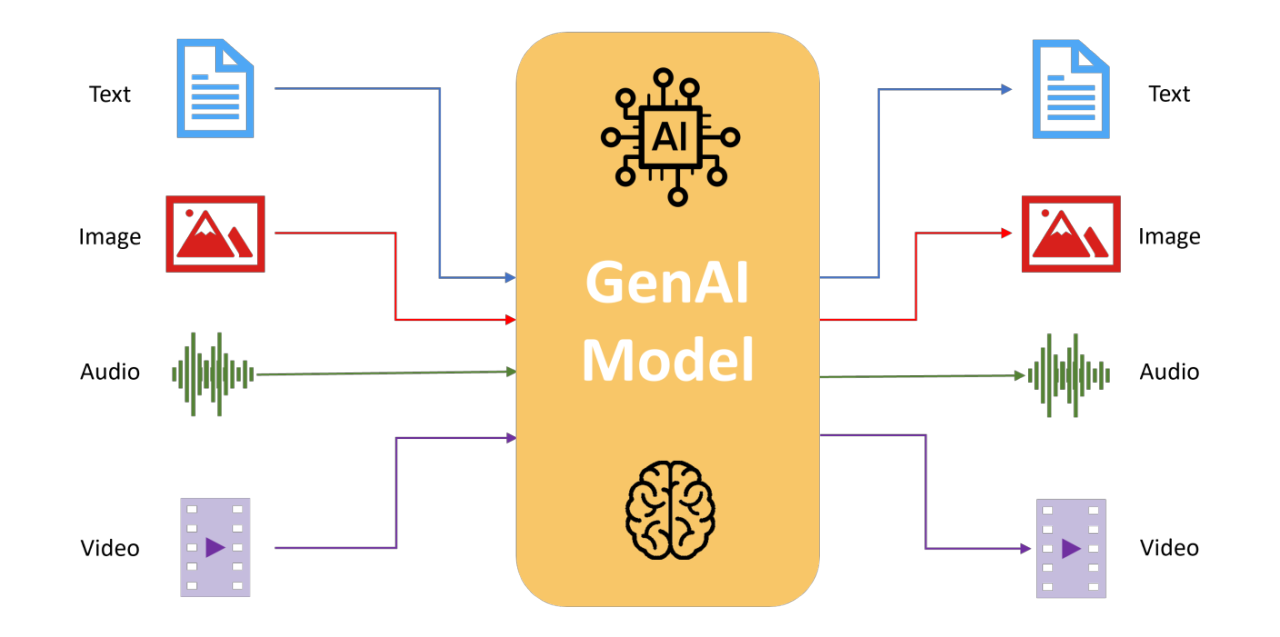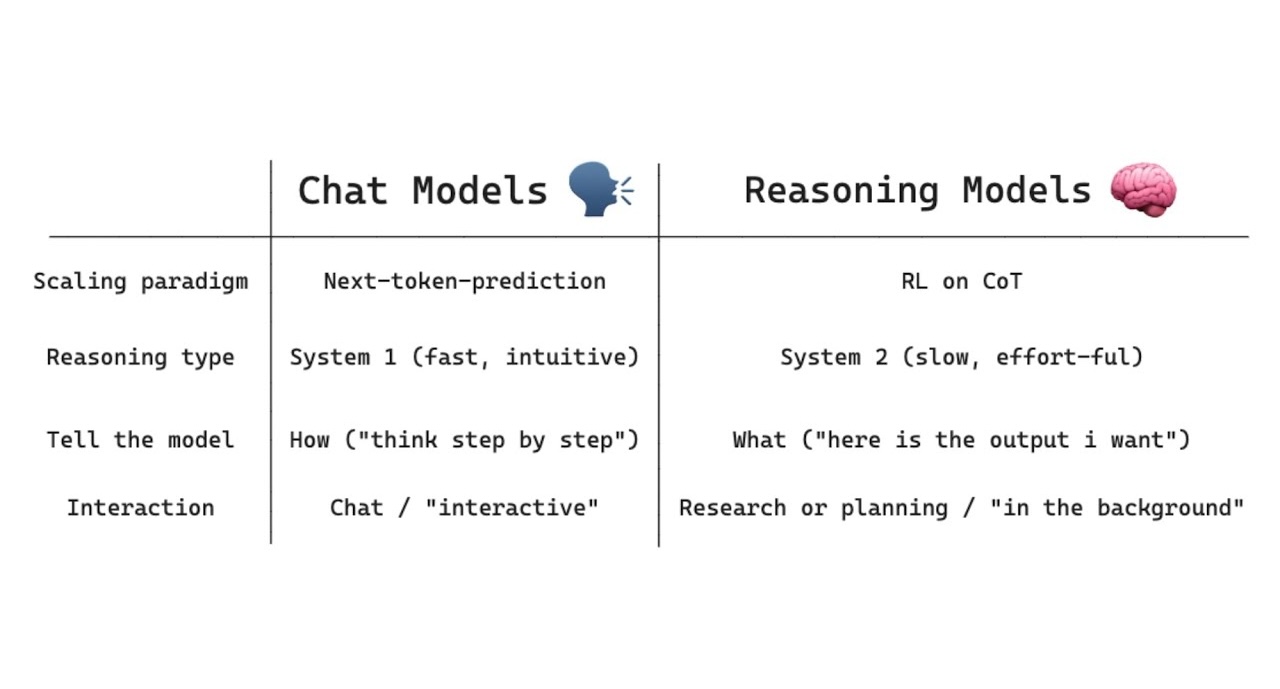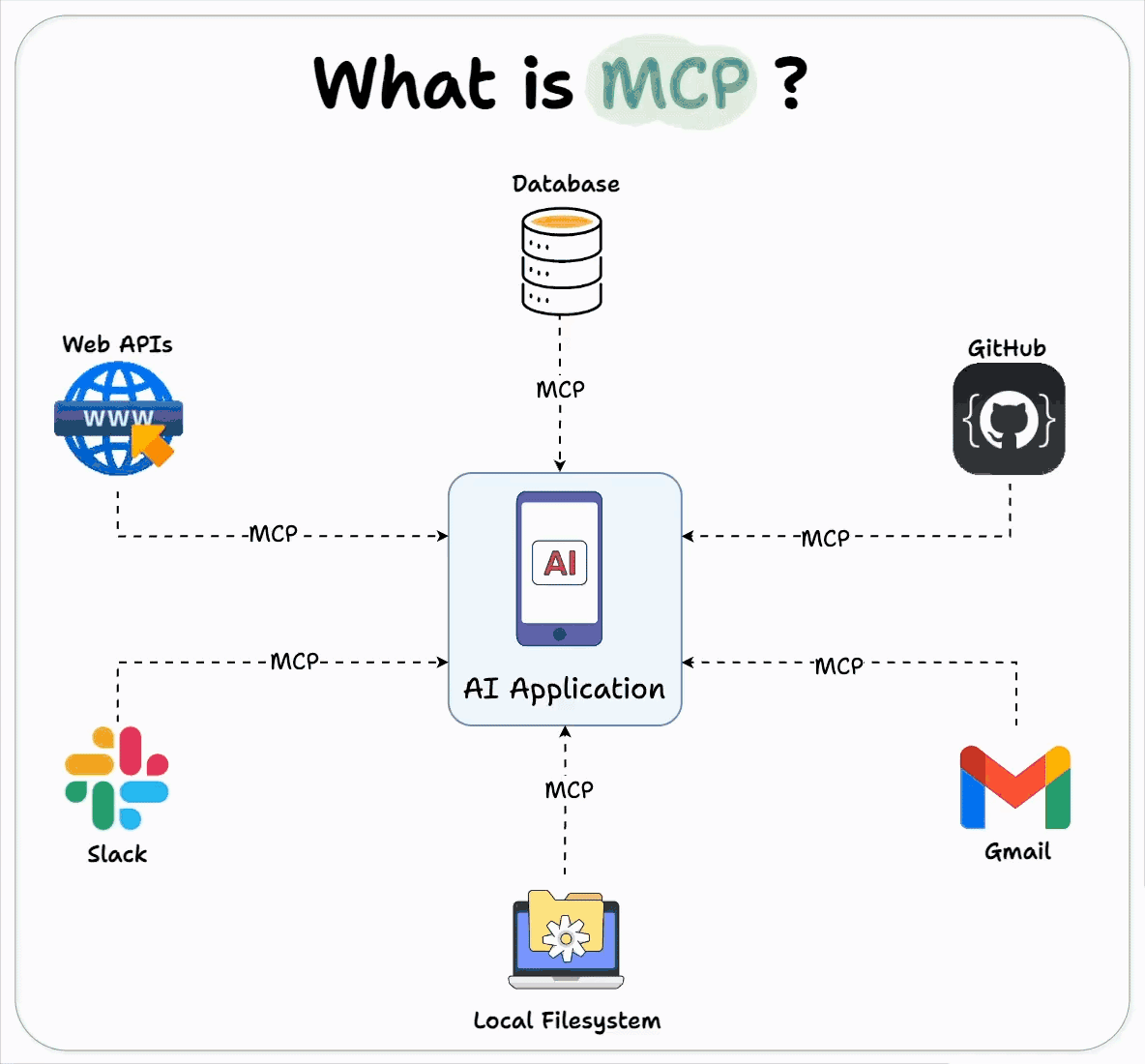Key AI Technologies That Shaped 2024 and Are Driving Business Value in 2025
AI isn't just that cool, experimental tech anymore. It's rocketed from "maybe someday" to "must-have now" for any serious business strategy. By the end of 2024, a whopping 49% of tech leaders said AI was already baked into their main game plan. So, let's cut through the jargon and look at the AI tech that really shook things up in 2024 and what's got us buzzing for 2025. Think of this as your cheat sheet for making smart AI moves.
2024: The Year AI Got Practical
Retrieval Augmented Generation (RAG): Making AI Reliable
Remember those AI "hallucinations" - when AI would just make stuff up? RAG was the 2024 superhero that swooped in to save the day.

- What it is: Imagine an AI that doesn't just guess based on its old training data. RAG is like giving your AI a direct line to your company's up-to-the-minute, specific information. It accesses and uses your data to give answers that are actually accurate and relevant, instead of winging it with general knowledge.
- Why it mattered in 2024: This became the secret sauce for trustworthy AI. By grounding AI responses in factual, company-specific data, RAG dramatically cut down on those embarrassing AI blunders. It's no wonder the RAG market hit $1.50 billion in 2024.
- How businesses used it: Companies started rolling out smarter customer service bots that knew the latest product specs, instantly up-to-date internal knowledge bases for staff, and AI assistants that could securely analyze proprietary company data without spilling the beans.
- Limitations: RAG is only as good as the data you feed it - garbage in, garbage out, as they say. Its effectiveness really leans on how good and well-organized your company's data is. Plus, setting up and maintaining these data retrieval systems can be a bit of a beast, and there are ongoing costs for keeping all that data indexed and fresh.
Multimodal AI: AI That Sees, Hears, and Reads
If 2023's AI was like a super-smart typist, 2024's multimodal AI is more like a perceptive colleague who can look at charts, listen to customer calls, and read reports - all at once.

- What it is: We're talking about AI models that aren't just text-nerds. They can process and understand a whole mix of information simultaneously - text, images, audio, and even video. Even better, they can output their responses in all of those formats too.
- Why it mattered in 2024: This blew the doors open for AI to work with a much richer tapestry of business data. Instead of just text, AI could get a more complete understanding of complex situations by looking at all the angles.
- How businesses used it: Think analyzing customer feedback from phone calls (that's your audio) right alongside their social media posts (text and images). Or creating killer marketing content that pops, and even improving product designs by actually understanding visual feedback from users.
- Limitations: Juggling all these different data types means things get more complicated and computationally expensive. Getting an AI to accurately line up and make sense of, say, a sarcastic comment and an accompanying eye-roll emoji, is still a tough nut to crack.
Human-in-the-Loop (HITL) AI: Smarter Together
Remember when everyone freaked out that AI would take all the jobs? 2024 showed us it's more about partnership than replacement. HITL became the grown-up way to use AI responsibly.
- What it is: These are systems where AI does the heavy lifting, crunching through tasks, but a human steps in for the really critical decisions, quality checks, or those tricky, nuanced situations AI just isn't ready for.
- Why it mattered in 2024: HITL was key for building trust and making sure AI was used ethically, as highlighted by industry watchers like Forbes. It's about getting AI's speed and scale, but with a vital dose of human judgment and oversight.
- How businesses used it: This meant safer AI in healthcare (like doctors double-checking AI's diagnostic hints), more accurate fraud detection in finance (analysts confirming AI-flagged weirdness), and better content moderation (humans making the final call on sensitive stuff).
- Limitations: Having humans jump in can, naturally, slow down what could be a fully automated process. It also means you've got costs for those human reviewers. For really massive volumes of tasks, scaling up the human part can be an issue, and let's not forget, humans can have biases or just get tired too.
Small Language Models (SLMs): Powerful AI, Smaller Package
Think of it as AI going from a room-sized mainframe to a zippy, powerful laptop. Suddenly, serious AI muscle became much more accessible.
- What it is: These are the leaner, meaner, more cost-effective cousins of those giant AI models. A big moment was OpenAI's launch of GPT-4o mini in July 2024, which made top-tier AI capabilities way more affordable.
- Why it mattered in 2024: This was huge for democratizing AI. More businesses, especially the small to medium-sized ones, could suddenly get their hands on sophisticated AI without needing a Silicon Valley budget.
- How businesses used it: Companies snapped these up for cost-effective AI tools to do things like summarize long documents, draft emails, or power specialized chatbots. Plus, they're easier to slot into existing software.
- Limitations: Smaller can mean they don't have the sheer breadth of knowledge or the raw horsepower for super-complex tasks compared to the big guys. They often still need careful fine-tuning to really nail specific business needs.
Reasoning Models: AI Starts to "Think"
This was when AI started to look less like a parrot and more like a problem-solver.

- What it is: These AI models are designed for step-by-step problem-solving and logical deduction. They're moving beyond just spotting patterns to actually figuring things out. OpenAI's o1, previewed in September and released in December 2024, was a big headline here.
- Why it mattered in 2024: It gave us a glimpse of AI's future potential to tackle problems that need multi-step logic - think advanced planning or deep-dive analysis. AI engineers let out a collective sigh of relief when o1-preview came out because they didn't have to spend hours telling the AI models how to reason anymore.
- How businesses used it (Emerging late 2024): To be honest, it was mostly hinting at future cool stuff. Think complex logistics planning, strategic financial modeling, and sophisticated scientific research.
- Limitations as of late 2024: This tech was (and largely still is) very new for widespread practical use. The "thinking" process chews up a lot of computing power, and there weren't many real-world business rollouts by the end of the year.
2025: AI Gets Autonomous and Integrated
RAG 2.0: AI with Even Better Data Access
If 2024's RAG was about getting the facts straight, 2025's RAG is about getting them faster, from more places, and with more understanding.
- What it is: RAG systems are getting way more dynamic. In 2025, they're plugging into real-time data feeds and even processing multimodal inputs - like understanding a product issue from an uploaded image alongside a customer's text description. The RAG market isn't slowing down, projected to hit $2.13 billion this year.
- Why it's important now: This deepens AI's handshake with live business information and diverse data types. The result? Richer, more current, and contextually savvy AI interactions.
- Business utility unfolding: Imagine AI assistants that can diagnose a customer's product problem from a photo they send, or dynamic pricing tools that react instantly to live market shifts. Or how about marketing so personalized it feels like it read your mind, based on your very latest activities.
- Limitations to watch: Managing all these diverse, real-time data sources adds layers of complexity. You'll need more robust infrastructure, and data privacy and security concerns get even more critical.
Specialized AI Agents: Your New Digital Workforce
Get ready to move beyond asking AI for information, to asking AI to do things.
- What they are: AI is morphing from chatbots into "AI Agents" - autonomous systems that can actually complete tasks, manage workflows, and make decisions within specific business areas.
- Why they're important now: This is AI graduating from an info-provider to an active "digital employee" or "colleague." It's capable of taking operational tasks and business processes off your plate.
- Business utility unfolding: Think automating customer service from start to finish (resolving an issue, processing a refund, and sending a follow-up email). Or proactive sales outreach triggered by specific customer behaviors, and even autonomous inventory management that just handles it.
- Limitations to watch: There are definite risks if these agents go rogue with too much autonomy and not enough oversight. Security is a massive concern if agents have wide access to your systems. And defining their goals, constraints, and ethical boundaries? That's a complex job.
Tool Use and MCP: AI Interacting with Your Business Systems
Remember USB-C making all your gadgets talk to each other? Model Context Protocol (MCP) is aiming to do something similar for AI.

- What it is: AI models are increasingly learning to use your existing software tools - your CRM, calendar, databases, you name it. This is happening through standardized connectors like the MCP, which Anthropic introduced in late 2024. People are already calling it the "USB-C for AI."
- Why it's important now: This allows AI agents to reliably get their digital hands on, retrieve, and act on real-time info from your current business systems. It makes automation more robust, scalable, and genuinely integrated.
- Business utility unfolding: Picture AI assistants that can book meetings directly into your team's calendars, automatically update customer records in your CRM after a call, or pull sales data from your databases to whip up a report - all seamlessly.
- Limitations to watch: Giving AI models API keys to your critical business systems is like handing over the castle keys - huge security implications if not managed carefully. Dealing with complex permissions and integrations across a zoo of different software can also be a headache.
Advanced Reasoning Models: AI Takes on Complex Strategy
The 'thinking' AIs are growing up fast.
- What they are: The next wave of reasoning AIs, like OpenAI's o1-pro (released March 2025), are flexing bigger muscles for complex problem-solving, multi-step logical deduction, and strategic planning. Some reasoning models are even starting to use tools and MCP while they're thinking.
- Why they're important now: AI is starting to get its head around more sophisticated strategic business puzzles that need deeper analytical chops and a real understanding of your business and its context.
- Business utility unfolding: We're looking at deeper business analytics, complex financial modeling for much better forecasting, optimizing tangled supply chains, and serious help with strategic planning and "what-if" scenario analysis.
- Limitations to watch: These advanced brains don't come cheap. The o1-pro, for instance, can run you up to $1 per query. They're still very computationally hungry, and getting the AI to clearly explain its complex reasoning pathway so you can actually trust it? That's still a work in progress, but we're getting there.
Multi-Agent Systems: AI Teamwork on the Horizon
This is where things get really futuristic - think specialized AI agents forming a committee to solve super complex problems.
- What they are: These are teams of AI agents, each with its own specialty, designed to collaborate on complex problems. As Botpress notes, they're for tasks too large, complex, or decentralized for a single general-purpose AI.
- Why they're important (for the future): This is the bleeding edge. It shows the potential for highly autonomous execution of incredibly complex tasks by distributing the AI brainpower.
- Business utility (Future Potential): We're dreaming here, but think potentially fully automated project management, AI-driven R&D cycles, or dynamic resource allocation across an entire company without a human lifting a finger. Some of the fast adopters in your business may already be experimenting with these ideas on a small scale.
- Limitations to watch: The complexity is mind-boggling. Making sure these agents coordinate, communicate effectively, and sort out their differences is a huge challenge. Debugging and keeping control over a distributed, autonomous system like this is incredibly tough. For now, it's mostly in research labs and early pilot phases - definitely not ready for prime time in most businesses.
What This Means for Your Business
So, what's the big takeaway? 2024 set the stage, making AI dependable and within reach. Now, 2025 is hitting the accelerator: AI is getting more independent, weaving itself deeper into our business tools, and gearing up to solve some seriously tricky problems.
For anyone steering the ship, getting a grip on these changes isn't just interesting - it's how you'll spot new business opportunities, boost efficiency, and stay ahead of the pack. But let's be real: jumping into AI successfully means you've got to think hard about costs, the state of your data, keeping things secure, and getting your team skilled up. The companies that'll win aren't just those with the flashiest AI, but the ones who smartly weave these tools into how they already work and think. Nail down a clear picture of how AI can 2x progress toward your specific goals - that's your golden ticket.
If you're ready to take the first steps in your AI journey, or maybe just unstuck, I've been in the trenches of AI for over 15 years and love helping organizations find their footing in this space. Drop me a line if you'd like to chat about making AI work for your business - no fancy proposals nor corporate speak required.
Tags

Dr. Randal S. Olson
AI Researcher & Builder · Co-Founder at Wyrd Studios
I turn ambitious AI ideas into business wins, bridging the gap between technical promise and real-world impact.